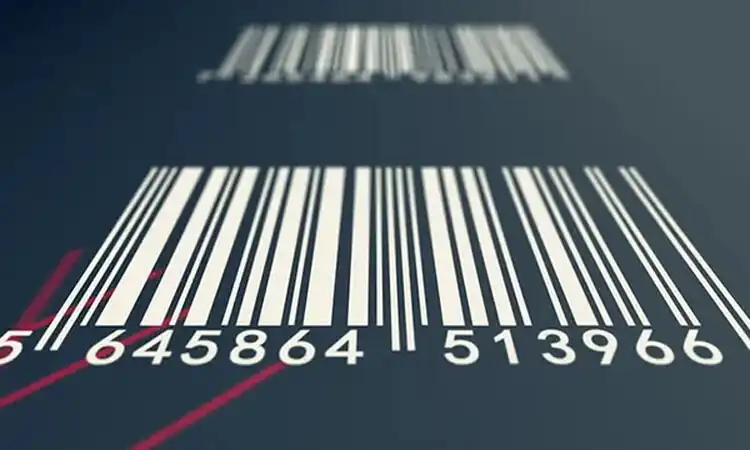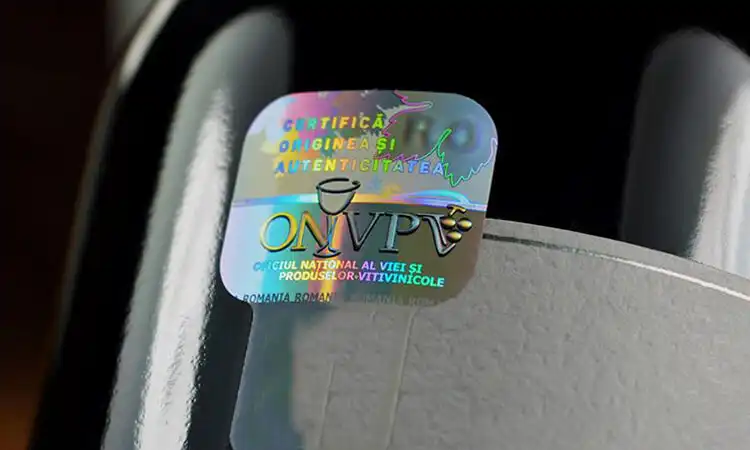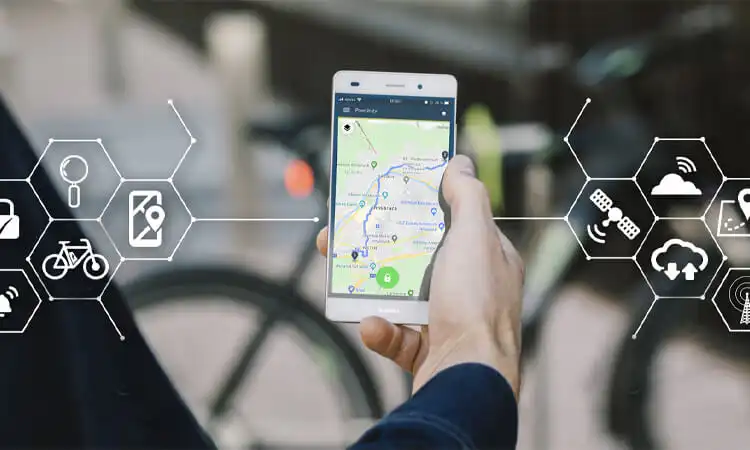RFID technology has been a popular choice for anti-counterfeiting measures for years. However, as technology advances, new alternatives to RFID have emerged. This article will compare RFID technology with its alternatives, including its advantages and disadvantages in the anti-counterfeiting industry.
RFID Technology Overview
RFID (Radio-Frequency Identification) is a wireless technology that identifies and tracks objects using radio waves. RFID systems consist of tags, readers, and software to manage the collected data. RFID tags can be either passive or active and can store different types of data depending on the application.
RFID tags are equipped with a small microchip and a tiny antenna that allow the tag to communicate with an RFID reader. The reader sends out a radio signal that powers the tag and enables it to transmit data back to the reader. RFID technology is widely used in various industries, including retail, healthcare, and logistics, to track inventory, authenticate products, and prevent counterfeiting.
Advantages of RFID Technology:
- High read range: RFID tags can be read from a distance of several meters. This makes it suitable for tracking large volumes of products.
- High data capacity: RFID tags can store a large amount of data. These include product information, manufacturing date, and batch number.
- Fast reading speed: RFID readers can read multiple tags simultaneously. This makes it faster than other technologies like barcodes.
Disadvantages of RFID Technology:
- High cost: RFID technology is more expensive than other anti-counterfeiting technologies like holograms and QR codes.
- Limited tag lifespan: RFID tags have a limited lifespan. This can be a problem for products with a long shelf life.
- Privacy concerns: RFID tags can be read without the user’s knowledge, raising privacy concerns.
Alternatives to RFID Technology
While RFID is a popular technology for anti-counterfeiting, other RFID alternatives can provide similar benefits. Some of the alternatives to RFID technology include:
RFID Alternative 1: Barcode Technology
Barcode technology is one of the most popular alternatives to RFID. Bar codes consist of a series of parallel lines of varying widths that a scanner can read. Barcodes are widely used for tracking and identifying products in retail and manufacturing industries. They are low-cost and easy to implement, making them a popular option for small businesses.

Pros:
- Low cost
- Easy to implement
- Widely accepted
- Can store basic information
Cons:
- Limited data storage
- Require line-of-sight scanning
- It can be easily copied
Applications of BarCode Technology:
- Inventory Management: Barcodes are widely used to track inventory levels, monitor stock movements, and prevent stockouts.
- Retail: Barcodes are used for product identification and pricing in retail stores.
- Manufacturing: Barcodes are used for tracking work-in-progress, finished goods, and shipping.
RFID Alternative 2: Holographic Labels
Holographic labels use unique patterns and optical effects to create a visually striking and difficult-to-replicate label. They are commonly used in the pharmaceutical and luxury goods industries to prevent counterfeiting.

Pros:
- Low cost
- High security
- Easy to recognize
Cons:
- Limited data storage
- Limited lifespan
Applications of Hologram Labels:
- Product Authentication: Holograms labels are widely used to authenticate products and prevent counterfeiting in the pharmaceuticals, luxury goods, and electronics industries.
- Currency: Holograms labels are used on banknotes to prevent counterfeiting.
RFID Alternative 3: QR Code Technology
Quick Response (QR) code technology employs two-dimensional barcodes known as QR codes. Smartphone cameras can scan QR codes to obtain information or enable object tracking. QR codes have seen extensive use in marketing and authentication applications.

Pros:
- Can store more data than barcodes
- Easy to generate
- Smartphones can scan it.
Cons:
- Requires a smartphone with a camera
- Limited range
- It can be easily copied
Applications of QR Code Technology:
- Product Information Sharing: QR codes give customers an easy way to obtain detailed product information. This information ranges from nutritional facts and recipes to user guides. Warranty details and terms of service documents are also accessible via QR codes.
- Advertising Engagement: Advertisers incorporate QR codes into their campaigns. This allows customers to access supplementary product details on their mobile devices easily. QR codes further connect customers with exclusive promotional offerings.
- Event Registration: QR codes streamline the registration and check-in processes for events. Participants can register for and check in to events quickly by scanning QR codes with their mobile devices. This mobile-enabled approach expedites the registration and check-in workflows.
RFID Alternative 4: NFC Technology
Near Field Communication (NFC) is a short-range wireless technology. It enables smartphones and other devices to interact with objects in close proximity, like smart tags and packaging. NFC technology has been widely adopted in contactless payment systems and has potential in anti-counterfeiting applications.

Pros:
- Secure
- Smartphones can read it.
- You can use it for contactless payments.
Cons:
- Limited range
- Requires a smartphone with NFC capability
- It can be expensive to implement
Uses of NFC Technology:
- Contactless Payments: Contactless payments are made secure and convenient through NFC technology. NFC payments serve retail shoppers, public transit riders, and hospitality patrons. NFC payments provide a faster alternative to chip and swipe.
- Access Management: NFC enables streamlined access management. NFC tags/readers replace physical keys and tickets in buildings and at events. This simplifies and speeds up security and entry procedures.
- Intelligent Labels: NFC powers smart labels and packaging technologies. For food and drink products, NFC tags share dynamic product information. They convey details like best-by dates, nutrition facts, batch numbers, and care instructions.
RFID Alternative 5: GPS Technology
Global Positioning System (GPS) is a satellite-based navigation system. It is capable of determining the real-time location of objects on Earth. GPS technology has been extensively adopted in transportation and logistics for asset and vehicle tracking.

Pros:
- Real-time location tracking
- Global coverage
- High accuracy
Cons:
- Requires a clear line of sight
- Can be affected by weather conditions
- It can be expensive to implement
Uses of GPS Technology:
- Fleet Management: GPS enables organizations to track, manage and optimize vehicle fleets. It provides route optimization and insights to improve fuel efficiency.
- Asset Tracking: GPS provides real-time visibility of assets. GPS can track the location of assets such as shipping containers, cargo, and equipment. This location information helps facilitate efficient asset management and resource allocation.
- Personal Tracking: GPS allows the location of individuals to be tracked, enabling use cases like elderly care, child safety, and monitoring outdoor activities. The geo-fencing capabilities improve oversight and response times.
RFID Alternative 6: Bluetooth Low Energy (BLE) Technology
Bluetooth Low Energy (BLE) is a wireless technology connecting low-power devices. They facilitate short-range communication between devices with limited battery capacity. BLE technology has been widely used for indoor tracking and proximity-based services.

Pros:
- Low power consumption.
- Long battery life.
- You can use it for indoor tracking.
Cons:
- Limited range
- Requires a compatible device
- Can be affected by interference
Uses of Bluetooth Low Energy (BLE) Technology:
- Proximity Marketing: BLE technology facilitates location-based marketing. It accomplishes this aim by delivering alerts and promotions to clients. The alerts and promotions are delivered when customers are close to a store or particular merchandise.
- Indoor Navigation: BLE is used for indoor navigation. For example, it is used in hospitals, airports, and shopping malls. BLE provides directions and location-based services to individuals within these indoor spaces.
- Asset Tracking: BLE facilitates asset management. For example, it allows items like medical devices, tools, and inventory to be tracked indoors. BLE tags attached to these assets communicate their location within indoor environments.
Each of these alternatives has its own unique advantages and disadvantages, depending on the specific use case. For example, barcodes and QR codes are low-cost and easy to implement, but they have limited data storage and require line-of-sight scanning. NFC is secure and can be used for contactless payments, but it has a limited range and requires a compatible device. BLE is ideal for indoor tracking and has low power consumption, but it has a limited range and can be affected by interference. GPS has global coverage and high accuracy but requires a clear line of sight and can be expensive to implement.
Advancements in Anti-Counterfeiting Technologies
As counterfeiting methods become more sophisticated, anti-counterfeiting technologies must continue to evolve. Here are some of the latest advances in anti-counterfeiting technology:
- Digital Watermarking: Digital watermarking is a technique that embeds an invisible digital code into an image or document. This code can be used to verify the product’s authenticity and track it through the supply chain.
- Microtext and Nanotext: Microtext and nanotext are tiny text or patterns that are difficult to see with the naked eye. They can be used to encode information and verify the product’s authenticity.
- DNA Tags: DNA tagging involves embedding a unique DNA sequence into a product or packaging. This sequence can be used to verify the product’s authenticity and track it through the supply chain.
- Blockchain Technology: Blockchain technology creates a decentralized, tamper-proof ledger that can be used to track the movement of products through the supply chain. You can use it to verify the product’s authenticity and prevent counterfeiting.
Choosing the Right RFID Alternatives Technology for Your Business
When choosing an anti-counterfeiting technology for your business, you need to consider cost, effectiveness, and ease of implementation factors. Here are some questions to ask when choosing the right technology for your business:
- What is my budget for anti-counterfeiting technology?
- What level of security do I need for my products?
- What is the size and complexity of my supply chain?
- What are the potential privacy concerns with the technology?
- How easy is it to integrate with my current systems?
- What is the level of expertise required to maintain the technology?
By answering these questions, businesses can make an informed decision. The decisions involve selecting the right anti-counterfeiting technology. Businesses must pick technologies wisely. The chosen technologies should suit businesses’ unique needs. The cost of the technologies should fit businesses’ budgets. The technologies should deliver the required level of protection. The protection shields businesses’ products and brand image from counterfeiters.
RFID alternatives offer a range of effective solutions for businesses looking to combat counterfeiting. Each technology has its advantages and disadvantages, and businesses should carefully consider their needs and budget before deciding. By choosing the right anti-counterfeiting technology, businesses can ensure the authenticity of their products and prevent financial losses.








